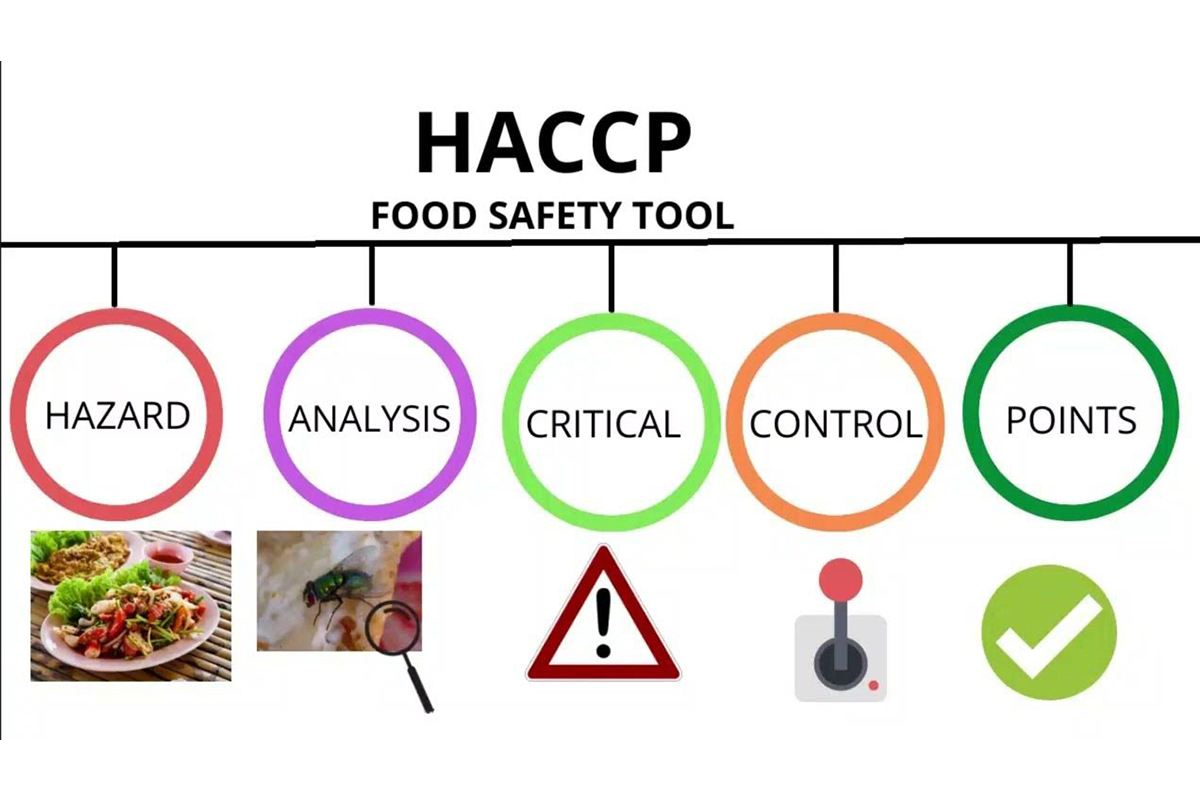
If you run a food manufacturing business in Malaysia, chances are you’ve heard terms like GMP, HACCP, or CCP being thrown around. But do you really know what they mean — and why they matter?
Understanding these acronyms is essential for compliance, audits, and ensuring food safety in your operations. Let’s break them down one by one.
1. GMP = Good Manufacturing Practice
Meaning: Good Manufacturing Practice (GMP) refers to the basic principles and procedures that manufacturers must follow to ensure products are consistently produced under hygienic and controlled conditions.
Focus:
-
Covers people, equipment, environment, and processes
-
Ensures food products are safe, hygienic, and of consistent quality
In Malaysia, GMP certification is overseen by the Ministry of Health (KKM) and accredited certification bodies.

2. HACCP = Hazard Analysis and Critical Control Points
Meaning: HACCP is a systematic approach to identifying potential hazards in the food production process and controlling them through designated critical points.
Focus:
-
Identify hazards such as biological, chemical, or physical risks
-
Establish critical control points to prevent unsafe products reaching the market
HACCP is internationally recognized and often required for exports and global trade.
3. PRP = Prerequisite Program
Meaning: PRPs are the basic hygiene and operational conditions that must be established in a food facility before HACCP can be effectively implemented. They create a safe working environment and reduce the likelihood of hazards occurring in the first place.
Examples of PRPs:
-
Cleaning and sanitation: Scheduled cleaning of equipment, utensils, and production areas to prevent contamination.
-
Pest control: Systematic monitoring and prevention of insects, rodents, or other pests.
-
Employee hygiene: Handwashing, protective clothing, and health checks for staff.
-
Facility design & maintenance: Proper ventilation, drainage, lighting, and regular equipment servicing.
-
Supplier control: Ensuring raw materials are purchased from approved and reliable suppliers.
Without strong PRPs, a HACCP plan will not be effective, because hazards cannot be properly controlled.

4. CCP = Critical Control Point
Meaning: A CCP is a step in the production process where loss of control could result in unsafe food. These are the most important points in a HACCP plan.
Key Characteristics of CCPs:
-
Directly linked to food safety hazards (not just quality issues).
-
Must have critical limits (e.g., temperature, pH, time).
-
Requires continuous or frequent monitoring.
-
Must include corrective actions if limits are not met.
Examples:
-
Pasteurization or sterilization temperature – If not achieved, harmful bacteria may survive.
-
Metal detector checks – Prevents foreign objects from reaching consumers.
-
Chlorine levels in wash water – Prevents microbial growth on fresh produce.
Properly managing CCPs is the backbone of HACCP, ensuring food hazards are eliminated or minimized.
.
5. CP = Control Point
Meaning: A CP is also a step that requires monitoring and control, but it’s not as critical as a CCP. Losing control at this step may affect product quality or consistency, but it does not directly compromise consumer safety.
Examples:
-
Water temperature used during cleaning may affect product efficiency but won’t directly endanger safety.
-
Packaging integrity checks ensure product quality but may not pose a direct hazard.
-
Product color or texture adjustments to meet consumer expectations.
While CPs are important for customer satisfaction and brand reputation, they are generally part of quality control (QC) rather than food safety management.
6. SOP = Standard Operating Procedures
Meaning: SOPs are documented cleaning and sanitation instructions designed to keep a food production environment hygienic and safe. They are usually mandatory PRPs and are closely reviewed during audits.
Key Elements of SOPs:
-
What needs to be cleaned? (e.g., floors, conveyor belts, mixing tanks, utensils)
-
When to clean? (daily, weekly, or after production runs)
-
How to clean? (step-by-step method, including chemicals and tools used)
-
Who is responsible? (assigning accountability to employees or cleaning staff)
-
Verification & records: Documenting cleaning activities and verifying effectiveness (e.g., ATP swabs, microbiological testing).
Examples of SOPs in food factories:
-
Washing production lines with approved sanitizers at the end of each shift
-
Using color-coded cleaning tools to avoid cross-contamination
-
Logging cleaning schedules and inspections for audit purposes
Well-documented SOPs not only prevent contamination but also serve as evidence of compliance during regulatory inspections or certification audits.
7. PPE = Personal Protective Equipment
Meaning: PPE refers to the protective gear worn by employees in a food facility.
Examples:
-
Hairnets, gloves, masks, lab coats, shoe covers
PPE protects both the product from contamination and the worker from potential hazards

8. QA vs QC
-
QA (Quality Assurance): Ensures systems and processes are designed correctly to prevent problems from occurring.
-
QC (Quality Control): Tests and inspects products to ensure they meet specifications and standards.
QA and QC work hand-in-hand: one prevents errors, the other detects and corrects them.
9. FSMS = Food Safety Management System
Meaning: An FSMS integrates all food safety programs (such as GMP, HACCP, ISO standards) into a comprehensive system.
Features:
-
Policies and procedures
-
Documentation and record-keeping
-
Verification and continual improvement
A well-structured FSMS helps businesses produce safe food consistently while staying compliant with regulations.
Conclusion
From GMP to FSMS, these acronyms are more than just jargon — they represent essential systems and processes that keep food safe and compliant with Malaysian and international standards.
At Flexly Consulting, we help food businesses implement these systems in a practical, effective way — from MeSTI and GMP to HACCP and ISO 22000.




